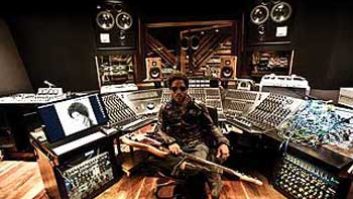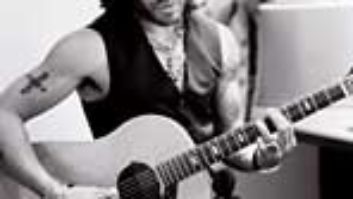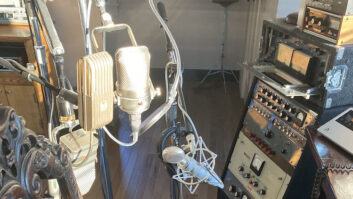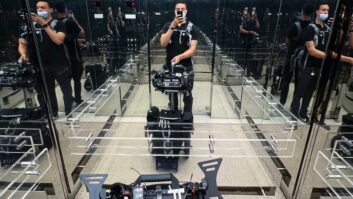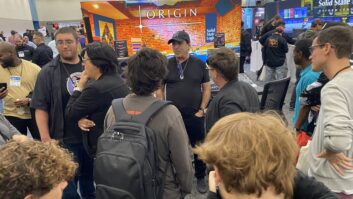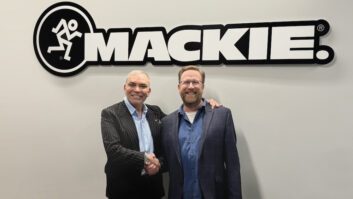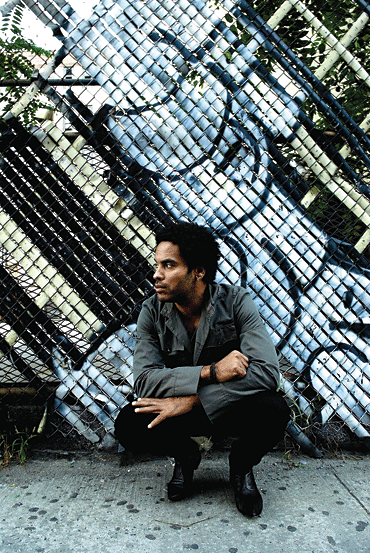
Lenny Kravitz stands alone. On the one hand, he is known for embracing some of the musical ideas of many predecessors he openly admires, from Jimi Hendrix to Led Zeppelin to Prince to Stevie Wonder. Indeed, he has frequently been accused of sounding “retro.” At the same time, Kravitz and his longtime engineer, Henry Hirsch, are also famous for not following rules in the studio — for breaking away from established sounds and techniques to create new styles and forms. Kravitz’s latest collaboration with Hirsch, their eighth together, is called It Is Time for a Love Revolution, and once again it shows their unmistakable nonconformist tendencies while serving up hard-rocking jams, soulful ballads and other genres that are not exactly mainstream in the current sense of the word, yet have a certain unmistakable commercial appeal. But then, that’s how Kravitz has always rolled.
His 1989 debut CD, Let Love Rule, was a throw-back juggernaut that caught the recording industry off-guard, especially the rock sector, which was then dominated by the aggressive raunchiness of Guns N’ Roses and Def Leppard, the driving yet pensive sounds of U2 and Sting, and the stylized pop of Madonna. Instead, Kravitz’s music had overt similarities to Hendrix, Zeppelin, Humble Pie, even Grand Funk Railroad, as well as touches of The Beatles and Bob Marley, and early ’70s soul innovators such as Curtis Mayfield, Stevie Wonder and Marvin Gaye. Hirsch says that Kravitz had never heard of the Grand Funk, Humble Pie or some of the other bands to whom critics compared Kravitz. From the beginning, the multitalented musician has played most of the instruments on his albums (though on early albums Hirsch contributed numerous keyboard tracks).
Since his impressive debut, Kravitz has had a quite diverse career. As a songwriter, his resume includes work with Gun N’ Roses guitarist Slash on “Always on the Run” for Kravitz’s second release, Mama Said, penning Madonna’s hit “Justify My Love,” and contributing tunes for discs by Mick Jagger and other artists. The 1993 album Are You Gonna Go My Way was Kravitz’s blockbuster breakthrough, the record that firmly established him as an arena-rock force, which he remains to this day, despite a series of ups and downs. His next album, Circus, was more in the psychedelic oeuvre and didn’t garner the acclaim of his first albums, but 5 (1998) produced his top-selling single “Fly Away,” and the 1999 Austin Powers comedy flick The Spy Who Shagged Me featured the hot-rocking soul man’s version of the Guess Who’s “American Woman” — another smash. Lenny in 2000 and the introspective Baptism in 2004 didn’t produce any huge hits, but by then he had become so well-established that he had a dependable following and his personal celebrity has always remained strong. In 2007, he turned up on the excellent all-star John Lennon tribute album Instant Karma (singing a harrowing version of “Cold Turkey”), but Love Revolution, his first album release in a few years, marks Kravitz’s return to the charts and airwaves in a big way.
“All of Lenny’s records take a good amount of time to produce because he does different things in between,” Hirsch comments about the making of the new album. “We started on it in late 2006; he called me to work on it for a two to three-week interval. Then he went away for a while. That seems to work pretty well for us because it gives both of us perspective about what we’ve done.” (Kravitz was originally scheduled to be interviewed for this article, but he fell ill in late January and even canceled his entire tour of Europe as a result.)
Hirsch says that all of Kravitz’s albums have been made essentially the same way, though obviously the songs and the sonics within those songs can change radically from album to album, and even from song to song.
“He’ll cut the track, usually starting with the drums — on most of this record it was Lenny on drums and Craig Ross [Kravitz’s foil since his third album] on guitar. After they finish that, Lenny will pick up a bass and we’ll record that, and then he’ll continue to add stuff. Usually, we’ve finished the majority of the recording in six to eight hours, depending on how picky we are with the sounds. We’re both quite critical about sounds, so that tends to be the most difficult portion of the whole thing. Then he’ll go write the lyric; he’ll probably sing it the next day if he’s in New York.
“Our style of recording is not based on the traditional idea of, ‘Let’s go cut our tracks, bounce them to Pro Tools, fix them in Pro Tools, then overdub our vocals, add a bunch more overdubs, sweeten everything and then book time with an overpriced mixer.’ We don’t do any of that,” Hirsch continues. “We try to get the right sounds when we’re recording, and we’re really mixing as we go along as the instruments are being put down. If you’ve got everything recorded the way you want to hear it, then later on what you’re doing is more just balancing than fixing and mixing. We’re not that finicky about little details you could do in Pro Tools; we don’t stack a hundred guitars, and we don’t trigger snares and kicks and do all that nonsense.”
That said, they do record to Pro Tools these days, though Hirsch adds, “I don’t think there’s any question that my 3M 79 tape machine blows away Pro Tools in terms of sound, but if Lenny’s more comfortable dealing with Pro Tools, that’s the priority and it’s okay with me.” Hirsch’s Pro Tools engineers on the album were Chris Theis and Cyrille Taillandier.
According to Hirsch, 95 percent of Love Revolution was recorded at Hirsch’s usual haunt inside Edison Studios in Manhattan; most of the remaining 5 percent was recorded remotely by Kravitz in his home studios in Miami and France, “but 100 percent of it was mixed and worked on by me,” Hirsch notes. The engineer’s studio at Edison is impressive: “I have a 2,500-square-foot live room with an 18-foot ceiling attached to a 500-square-foot control room,” he says. “Having the room with the high ceiling is so important for the recordings. The room assists in everything, from the first drum and guitar recordings — because the type of spill it creates is really easy to control and sounds quite good — to vocals and everything else, simply because, in essence, it’s a very clean- and clear-sounding room.”
Hirsch is completely devoted to his studio’s 26-input Helios board, originally manufactured in Britain in the ’70s and used for both tracking and mixing. The room’s ATC SCM-200 monitors are also British-made. Some of the mic preamps in the control room were custom-made by Dave Amels, who also built a variable-phase pot for the console and a custom bass DI. Among Hirsch’s favorite mics are a Neumann U47 that he uses on vocals (sometimes through a Fairchild 660 compressor), RCA 10001s and 44s (great for strings and brass), Sony C-38s (guitars) and Neumann U67s and KM-56s (various other instruments). He still likes plate reverbs best and has been known to use a Focusrite limiter and a rare Motown custom EQ. “We don’t use a lot of choruses, effects, delays, sequences or tricks; not a lot of processing,” Hirsch says. “I’ve always been based on a very simple approach: using the vocal as the center of the track and building on it from there. Basically, we just concentrate on the sound of each specific instrument as we’re doing them.”
Given the sort of equipment Kravitz and Hirsch favor, and the fact that musically Kravitz occasionally wears his influences on his sleeve, is it any wonder that the sound of Kravitz’s records sometimes seems to hearken back to the pre-digital days of his musical heroes? Hirsch bristles at the constant comparisons between Kravitz and great acts from the ’60s and ’70s, but he acknowledges that many of those artists did make great-sounding records.
“People often harp about us sounding ‘retro,’” he says. “But if people really listen, they will hear that the melody and song construction is all Lenny. We’re just trying to make good-sounding records. It’s just opinion out there saying the records sound like Led Zeppelin. Like the first single [on Love Revolution], ‘I’ll Be Waiting’: Led Zeppelin would never have done a song like that. If the drum sounds to someone like Led Zeppelin, it’s not because I’m trying to be Led Zeppelin; I’m just trying to support the song the best I can. Lenny would never sit down, and say, ‘Let’s make this sound like a Led Zeppelin song,’ because how would you do that? It’s soul ballad. It’s his song, his melody, his feel. It doesn’t sound like Led Zeppelin or Jimi Hendrix or any of those people. It sounds like Lenny.” If there are certain sonic similarities, though, Hirsch believes it has to do with their recording process, with emphasis on the “front end” (good performances and clean recordings) rather than the “back end” (technological enhancement and mixing). But, he says, “The choices other studios and engineers made to do a Beatles or Zeppelin record are not relevant to me. I couldn’t care less about what gear made such and such record back in the day.”
Kravitz’s albums are famously eclectic both because he is a restless and creative spirit, and because he and Hirsch like to treat every song differently. “The process of getting sounds is brand-new every time it happens, and in each song because we don’t do the same setup for a whole album,” Hirsch says. “We’re always experimenting and discovering new things together.”
And that seems to suit Kravitz fans just fine. “Lenny has a good sense of what his fans will like,” Hirsch offers. “We do make records a lot differently from most commercial pop records, but that’s something they like about him. Whether it goes on the radio is always an issue, because some black people don’t think it’s black enough and some white people don’t think it’s white enough, so he sometimes gets caught in between. But the fans have been supporting him for 20 years, so he must be doing something right.”
